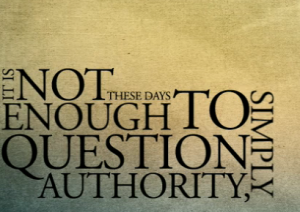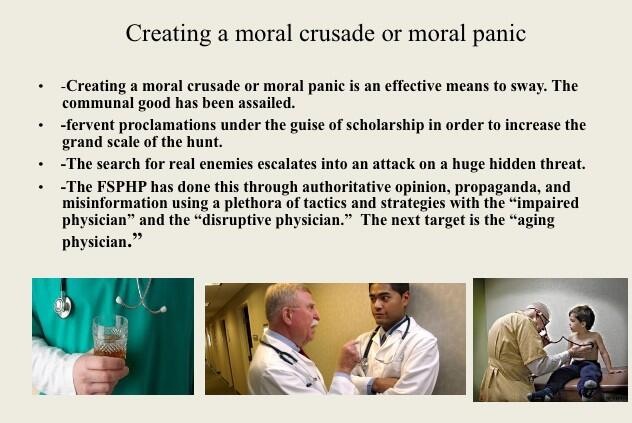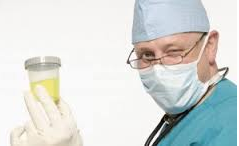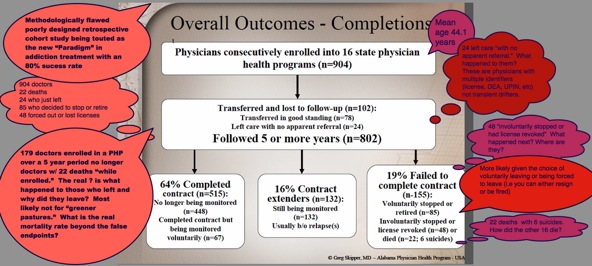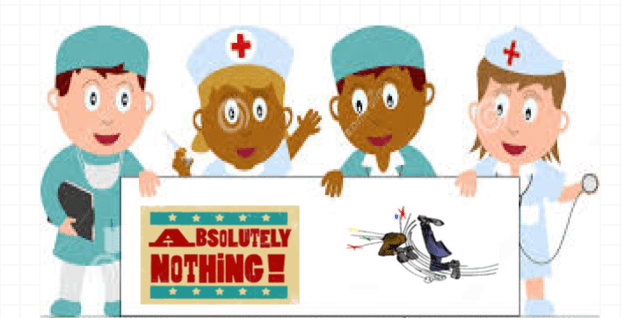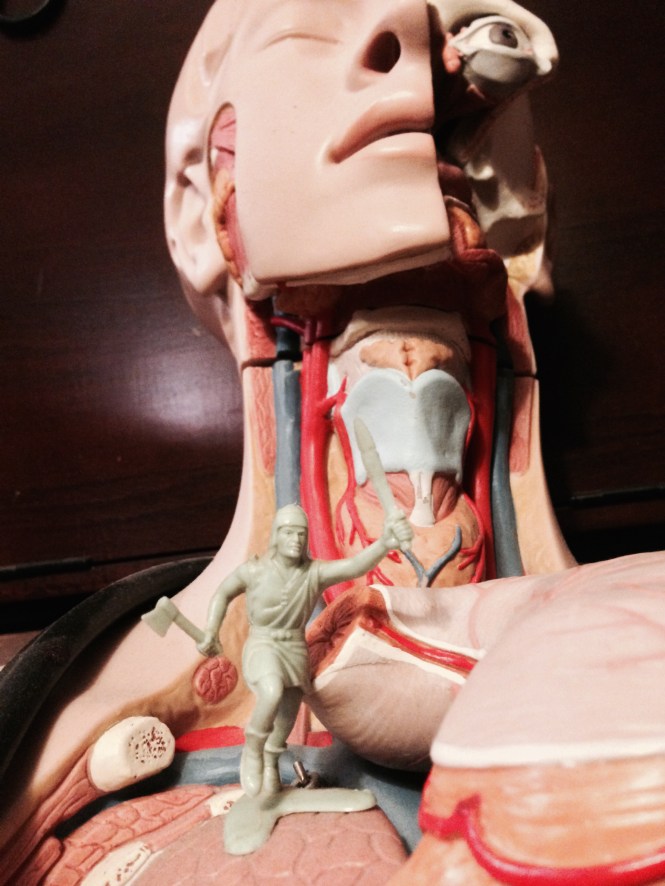 The majority of doctors are of good heart and sound mind. Most doctors strive to do the right thing and the correct thing to the best of their capabilities in any given circumstance. Most doctors by nature are intelligent, inquisitive and caring. Their actions are not driven by self-interest or greed but by thoughtful reasoning and moral compass. As in any population, of course, vast differences exist in individual characteristics including intellectual acumen, empathy and common sense. Those bereft of moral compass and the intolerant and prejudiced walk among us in all professions. Medicine is no exception. The simple truth to the matter is overwhelming majority of people are good people. They are honest, have integrity and are guided by conscience. Most police officers are not trigger-happy racists. Most Catholic priests do not have an affinity for alter-boys. And most doctors do not hand out opiates like halloween candy. What we hear about are the exceptions not the rule.
The majority of doctors are of good heart and sound mind. Most doctors strive to do the right thing and the correct thing to the best of their capabilities in any given circumstance. Most doctors by nature are intelligent, inquisitive and caring. Their actions are not driven by self-interest or greed but by thoughtful reasoning and moral compass. As in any population, of course, vast differences exist in individual characteristics including intellectual acumen, empathy and common sense. Those bereft of moral compass and the intolerant and prejudiced walk among us in all professions. Medicine is no exception. The simple truth to the matter is overwhelming majority of people are good people. They are honest, have integrity and are guided by conscience. Most police officers are not trigger-happy racists. Most Catholic priests do not have an affinity for alter-boys. And most doctors do not hand out opiates like halloween candy. What we hear about are the exceptions not the rule.
John Forbes Nash was an American mathematician who made fundamental contributions to differential geometry and game theory and portrayed by Russel Crowe in the 2001 film A Beautiful Mind. Nash described a type of equilibrium in which these harmful exceptions were kept at bay by the population majority with empathy and reasoning. This small minority of the population was kept in check by countermeasures. Miscreant actions were met with law and other measures that provided consequences for actions outside societal norms. Thus self-serving actions in one’s best interest but at the expense of others was stifled and prevented from gaining a foothold in the majority population.
In regard to the medical profession an apt example of Nash equilibrium is the case of Detroit Doctor Farad Fata who devised a scam to diagnose cancer in patients who did not in fact have cancer to profit from the unneeded treatment; an unconscionable scheme incomprehensible to those of ethical integrity. His pocket was lined with 34 million dollars over the years. When he was eventually caught the Federal prosecutor recommended a 175 year prison sentence due to his egregious acts and he was sentenced to 45 years in prison. Although someone contemplating a risk benefit analysis of diagnosing healthy patients with cancer as a means to put coins in their purse is undoubtedly a rare event the severe consequences of Farad’s action serves as a deterrent. Criminal reasoning also employs a risk/benefit analysis regarding the chances and consequences of getting caught.
 What might Nash think of a population in which this minority of deviants was not punished for their actions but instead given “treatment” in a communal area where they were able to interact with others of the same constitution ? What do you think Nash might say if individually and collectively this same population was put in a position of power over others but without any oversight, regulation or accountability? A disequilibrium would inevitably ensue with grave complications to the rest.
What might Nash think of a population in which this minority of deviants was not punished for their actions but instead given “treatment” in a communal area where they were able to interact with others of the same constitution ? What do you think Nash might say if individually and collectively this same population was put in a position of power over others but without any oversight, regulation or accountability? A disequilibrium would inevitably ensue with grave complications to the rest.
 Coraline is a children’s novella written by the British author Neil Garman in 2002. It has been compared to Lewis Carroll’s Alice’s Adventures in Wonderland and adapted into a film in 2009. Coraline is a little girl who moves into a new house with her parents. She is constantly bored and unhappy her parents do not give her the attention she wants and while exploring the house she finds a door that leads to an alternate version of her reality where her parents are fun and attentive and everything seems wonderful but things get creepy very quickly. Her parents look like her parents but instead of their eyes they have shiny black buttons and she soon finds herself in a horrific and dark place that looks like reality but slightly off and terribly ominous and threatening. Such is the case with the medical profession today. Somewhere along the line it took a nasty left turn and although looks the same its slightly off nature has become threatening and crippling to many. An erosion in the hierarchy has occurred and much of the practice and policy pushed by the self-interest groups to regulators and administrators is not only bad, it is absurd.
Coraline is a children’s novella written by the British author Neil Garman in 2002. It has been compared to Lewis Carroll’s Alice’s Adventures in Wonderland and adapted into a film in 2009. Coraline is a little girl who moves into a new house with her parents. She is constantly bored and unhappy her parents do not give her the attention she wants and while exploring the house she finds a door that leads to an alternate version of her reality where her parents are fun and attentive and everything seems wonderful but things get creepy very quickly. Her parents look like her parents but instead of their eyes they have shiny black buttons and she soon finds herself in a horrific and dark place that looks like reality but slightly off and terribly ominous and threatening. Such is the case with the medical profession today. Somewhere along the line it took a nasty left turn and although looks the same its slightly off nature has become threatening and crippling to many. An erosion in the hierarchy has occurred and much of the practice and policy pushed by the self-interest groups to regulators and administrators is not only bad, it is absurd.
Most doctors strive to do the “right thing” but it is difficult. Gauntlets have been put in place that cannot be maneuvered by those who strive to do their best and do not cut corners. The current environment precludes creativity and despises independent thought. Both professional and private life is held to demands of the unthinking obtuse. It defies logic, reasoning and common sense.
Doctors have become nothing more than collared dogs, leashed and led by the authoritative pronouncement of unexamined, illegitimate and irrational authority. Evidence-base, critical reasoning and common sense have taken a back seat to power and control.
 My hero’s in medicine both historically and personally have always been the maverick’s -those doctors with superlative and almost preternatural clinical acumen who can make the right diagnosis when no one else could or have made daring and unprecedented contributions to the field.
My hero’s in medicine both historically and personally have always been the maverick’s -those doctors with superlative and almost preternatural clinical acumen who can make the right diagnosis when no one else could or have made daring and unprecedented contributions to the field.
One example would be Dr. William Morgan who helped Boston win the World Series a dozen years ago by performing a surgical procedure he invented on Curt Schilling’s ankle that allowed him to pitch when all the other experts said it was impossible. It worked.
When someone makes a diagnosis that eludes others or pioneers an innovative mechanism to improve the science of medicine it is an event that should be cheered and applauded not jeered and dismissed.
Of all the sad stories I have heard one particularly hit a nerve. A patient who was having intractable abdominal cramping and pain remained undiagnosed after multiple colonoscopies and endoscopies. He went to an older doctor who diagnosed him with an obscure diagnosis (splenic flexure syndrome) that is easily treatable and diagnosed and cured the patient of his pain with dispatch. When I was in medical school this would warrant three cheers and a toast. That is not what happened. Those clueless individuals wielding the endoscopes and colonoscopes who could not piece the puzzle were not happy that a general practitioner made a diagnosis that was nowhere on their radar. They reported him to hospital administration and the bullying and mobbing that ensued became too much. Deemed a disruptive physician he slit his throat during an operation. An assured comeuppance to the dregs that drove him there.
What do those in the physician health and regulatory corner of medicine think of maverick doctors?. The quote below is from an article in The Federal Bulletin, the official journal of the Federation of State Medical Boards (FSMB) entitled Proctoring of Disciplined Health Care Professionals: Implementation and Model Regulations. It is these regulations that helped shape the current physician health paradigm.

The implication is danger (not all of them mind you) but lets identify and weed them out. The right to “due process” as other practitioners is a curious remark and am unclear what exactly is meant here as: 1. due process is a right that should be afforded everyone and anyone; why is this even be considered unless they dispense it in different ways to different folks, and 2. Physician health programs have completely removed due process from doctors through ‘medicalization.” It does not exist. One of their selling points to the medical boards was its absence as they could remove a doctor from practice immediately and “without the constraints” of due process. All it takes is the mere accusation of a “potentially impairing illness.” That is what the did with Dr. Morgan. They have also done it to some of the brightest minds I have known in medicine. It is tragic. It is also not on the radar of most. The institutional injustice and absent redress has led to an epidemic of suicides and it is time this be acknowledged. Physician suicide is not caused buy “student loans” or “overwork.’ Those are challenges that can be overcome. Suicides occur when one is helpless, hopeless and trapped and that is what is happening here. I cringe every time I read some half-baked speculation on the cause of physician suicide. Those who need help are afraid to get help and those who do not need help are being entrapped in a system that is more than happy to “loosen” the diagnostic criteria and provide unnecessary treatment for a “tailored” diagnosis. Follow the money.
And while outspoken in denouncing what they regard as unethical and unprofessional behavior by other doctors, many of those who hold others to account are resistant to apply even the most minimal standards to their own activities. The primary author of the model regulations surrendered his medical license in 2001 after allegations of an “inappropriate ‘extended relationship'” with one of his patients. A not all that uncommon scenario in this population.
Doctors have been subjected to an intentional diminution of stature and much of this has to do with the moral panics and bogus dangers of doctors that has been spewed to the public by these very same organizations as they have gained a seat at the table of power.
 Authority needs to be grounded in wisdom and guided by ethical principles and codes of conduct. Such is not the case. If the information agencies rely on to make decisions and policy is unreliable then bad decisions, wrong decisions and flawed public policy can occur. The consequences can be far-reaching and grave.
Authority needs to be grounded in wisdom and guided by ethical principles and codes of conduct. Such is not the case. If the information agencies rely on to make decisions and policy is unreliable then bad decisions, wrong decisions and flawed public policy can occur. The consequences can be far-reaching and grave.
Rank-and-file doctors exist not in a repose of complacency but of disquietude. By nature they do not typically speak up. Most are afraid to. They have effectively been stifled by threat and fear. What is stunning is the commonality of this.
The BMJ paper below by Sophie Cooke refers to the practice of medicine in the U.K. but is apt and applicable in the U.S. Historically doctors have not vociferously spoke up as much as those in other professions. They tend to remain quiet and do not want to make waves. I have been contacted by many doctors who could speak out and make a difference but they don’t. The question that incessantly tugs at me is when will these people say “enough” and say something. Can what has been done even be undone at this point. Cooke speaks of “righteous vocational fury” and that the vocation needs to “be ballsy and capable of rebellion.” We too need to stand as one and speak out against illegitimate and irrational authority. We need to proclaim “enough is enough” and identify and remove illegitimate authority. What does it take for someone to stop bemoaning the current state of medicine quietly and silently and get “ballsy” enough to vociferously protest and rebel? Stand up.

Link to BMJ article here.
Editor’s Choice
In search of a good nanny
BMJ 2016; 355 doi: http://dx.doi.org/10.1136/bmj.i6565 (Published 08 December 2016)Cite this as: BMJ 2016;355:i6565
Sophie Cook, clinical reviews editor, Author affiliations, scook@bmj.com
Nannying, like medicine, is a vocation. The good nanny was everything a family could wish for: she cared for, helped, and guided her family to make their own decisions, knowing when to interfere and, crucially, when to butt out.
This week Simon Capewell and Richard Lilford debate whether, when it comes to states, nannying makes us healthier and whether information or legislation is the way to change health behaviour (doi:10.1136/bmj.i6341). Lilford explains, “There can be no autonomy if the state, rather than the individual, is the custodian of personal values.” He warns, “The nanny state’s impatient and sometimes self righteous zeal could do more harm than good.” Capewell argues that, on the contrary, a “nanny state means ensuring a healthy environment for all” and underpins every health determinant in Ivan Maslow’s hierarchy of needs, such as safety and love, to allow us to enjoy our health and fulfil our true potential.
One group lacking many fundamentals of Maslow’s pyramid is homeless people, who often struggle to access healthcare. Anne Gulland describes how some successful UK projects have broken down barriers to services (doi:10.1136/bmj.i6511). Helpful tips include drop-in clinics, more flexible appointment times, and awareness that lack of a permanent address is not a barrier to registering with a GP.
From a group that struggles to access healthcare to a group offered it in abundance: pregnant women. Karin Nelson and colleagues look at the role of electronic fetal monitoring in labour and at how an intervention that was initially introduced to reduce cerebral palsy (it has not) has subsequently been linked to increased rates of caesarean delivery and litigation (doi:10.1136/bmj.i6405). They call for doctors, courts, and the public to recognise the lack of proof for routine electronic monitoring and remind us that technologies in healthcare can have unintended consequences.
And finally, as we approach the end of a turbulent year in the NHS Margaret McCartney tells us it’s a sense of vocation that keeps it going (doi:10.1136/bmj.i6526), with doctors committed to going the extra mile. But this commitment also means that professionals can be exploited, she says, and that vocation “needs to be ballsy and capable of rebellion.” Will 2017 bring the “righteous vocational fury” she is hoping for?
Please donate to Disruptedphysician.com here to keep this blog running. It is expiring in 21 days and any contribution would be appreciated. We are making significant gains with articles such as Physician Health Programs Under Fire . These issues may seem small in the current turbulence, a small whirlpool in a maelstrom, but in reality they have enormous implications for all of us. Please help out if you can-ML




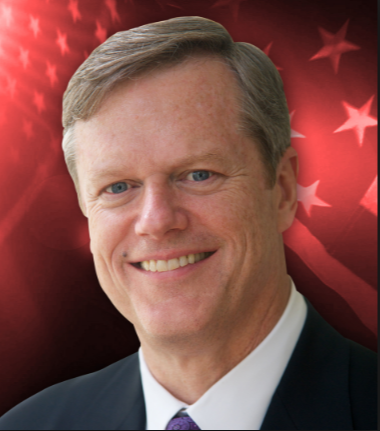
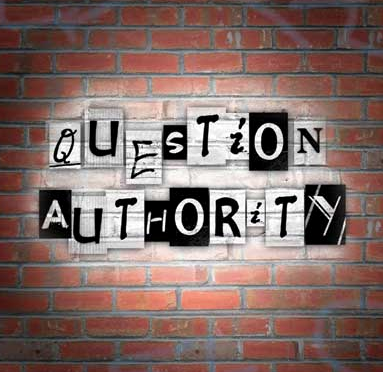
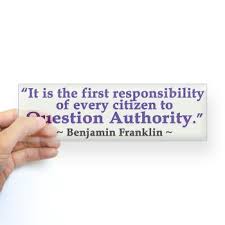 To evaluate the legitimacy of an authority it is necessary to:
To evaluate the legitimacy of an authority it is necessary to: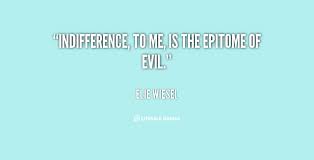
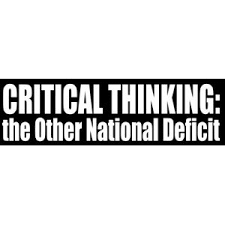 The dogmatic statements and abusive generalizations do not conform to reality.
The dogmatic statements and abusive generalizations do not conform to reality.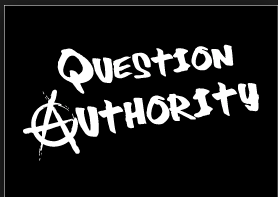
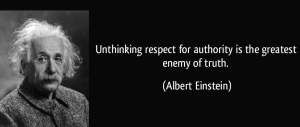 The concept of denial is not just used to force people into treatment and justify abuse during treatment but to suppress specific questions and deliberately avoid key facts.
The concept of denial is not just used to force people into treatment and justify abuse during treatment but to suppress specific questions and deliberately avoid key facts.

